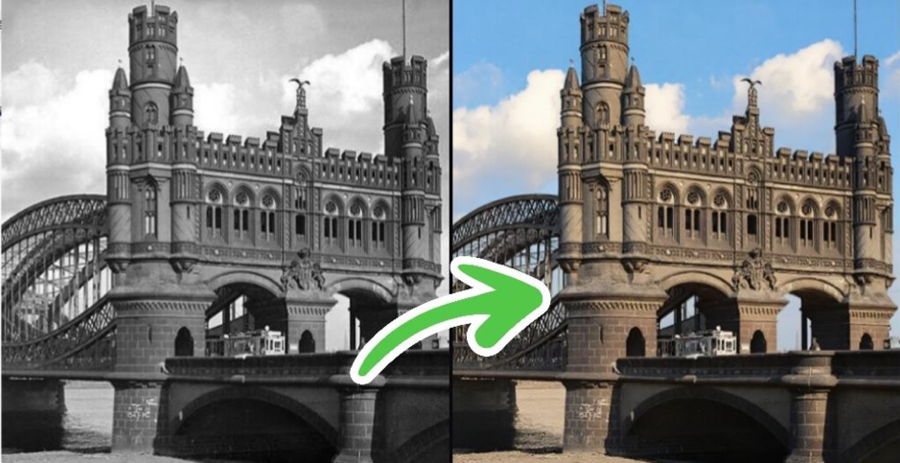- Home
- Articles
- Architectural Portfolio
- Architectral Presentation
- Inspirational Stories
- Architecture News
- Visualization
- BIM Industry
- Facade Design
- Parametric Design
- Career
- Landscape Architecture
- Construction
- Artificial Intelligence
- Sketching
- Design Softwares
- Diagrams
- Writing
- Architectural Tips
- Sustainability
- Courses
- Concept
- Technology
- History & Heritage
- Future of Architecture
- Guides & How-To
- Projects
- Interior Design
- Competitions
- Jobs
- Store
- Tools
- More
- Home
- Articles
- Architectural Portfolio
- Architectral Presentation
- Inspirational Stories
- Architecture News
- Visualization
- BIM Industry
- Facade Design
- Parametric Design
- Career
- Landscape Architecture
- Construction
- Artificial Intelligence
- Sketching
- Design Softwares
- Diagrams
- Writing
- Architectural Tips
- Sustainability
- Courses
- Concept
- Technology
- History & Heritage
- Future of Architecture
- Guides & How-To
- Projects
- Interior Design
- Competitions
- Jobs
- Store
- Tools
- More
How to Get Started with Architectural Photography: A Beginner’s Guide to Stunning Shots
Discover the art of architectural photography with this beginner-friendly guide! Learn to capture stunning shots of structures through creative composition, lighting, and angles. Explore essential equipment, advanced techniques, and tips for building a striking portfolio. Transform your passion for architecture into storytelling visuals that stand out online and in professional communities.

Architectural photography lets us capture the beauty and essence of man-made structures, blending art and technical skill. It’s not just about snapping pictures of buildings—it’s about telling a story through angles, light, and composition. Whether it’s a towering skyscraper or a quaint historic home, every structure has its own character waiting to be revealed.
Getting started might feel overwhelming, but with the right approach, anyone can dive into this creative field. From understanding your gear to learning how to frame a shot, there are simple steps that can help us build confidence and sharpen our skills. Let’s explore how we can turn our fascination with architecture into stunning photographs that speak volumes.

Table of Contents
ToggleUnderstanding Architectural Photography
Architectural photography focuses on capturing the design, details, and essence of buildings and structures. It’s not just about recording how a building looks but conveying its personality, cultural significance, or context within its environment. Every photograph tells the story of the structure’s relationship with space, history, or purpose.
Key elements include geometry, symmetry, patterns, and textures. Modern designs may emphasize clean lines and reflective surfaces, while older buildings might showcase intricate details and craftsmanship. Highlighting these features enhances the uniqueness of each structure.
Lighting dictates mood and clarity in architectural images. Natural light typically reveals a structure’s true form, while artificial lighting accents specific details. For example, sunlight brings out textures on historic facades, while nighttime lighting showcases contemporary glass buildings.
Composition requires careful planning to balance the structure’s elements with its surroundings. Traditional methods like the rule of thirds create visually appealing shots, while unique angles and framing add creativity. For instance, shooting upward from the base enhances height, and framing with foreground elements connects the building to its environment.
Using the environment elevates the context of architectural photos. Skies, shadows, or nearby landmarks often complement architectural forms. For instance, stormy clouds might emphasize modern steel buildings, while clear skies highlight traditional architecture’s bold colors.

Essential Equipment For Beginners
Starting architectural photography requires the right tools to capture structures accurately. Investing in quality gear helps produce sharp, well-composed, and visually appealing images.
Camera And Lenses
Using a DSLR or mirrorless camera is ideal for architectural photography, as both offer manual settings and excellent image quality. Models like the Canon EOS R8 or Nikon Z6 II provide flexibility for diverse lighting and composition needs. A wide-angle lens, such as a 16-35mm, captures expansive views, while a tilt-shift lens ensures minimal distortion when photographing tall buildings. Additionally, a prime lens like a 50mm works well for interior shots and detail-focused compositions.
Tripods And Accessories
Sturdy tripods ensure stability, especially during low-light conditions or long exposures. Options like the Manfrotto BeFree Advanced provide portability and reliability. A geared head attachment helps with precise angle adjustments for detailed framing. Other useful accessories include remote shutter releases to minimize vibrations and lens filters, like polarizers, which reduce glare on reflective surfaces.
Editing Tools And Software
Professional editing transforms raw images into polished, impactful photographs. Software like Adobe Lightroom ensures color correction, exposure adjustments, and perspective corrections. Photoshop allows advanced retouching of finer details. For mobile use, apps like Snapseed provide basic yet effective editing tools. Calibration tools for monitors help maintain color accuracy during post-production.

Learning Composition Techniques
Mastering composition techniques enhances the impact of architectural photography. Strong composition ensures images balance structure, context, and emotion effectively.
Framing And Angles
Framing highlights key architectural elements within a scene. Placing windows, arches, or doorways around the subject can draw attention to specific details. Exploring various angles, such as low, high, or side perspectives, creates visual interest and emphasizes a building’s scale or geometry. Keeping the camera parallel to vertical lines minimizes distortion in tall structures.
Using Light Creatively
Creative light usage transforms architectural images. Combining soft natural light during golden hour with dramatic shadows can build mood. Illuminations, such as streetlights or neon signs, add depth in night shots. Reflective surfaces, common in modern architecture, offer opportunities to use light creatively and capture reflections or symmetry.
Incorporating Leading Lines And Patterns
Leading lines guide viewers’ eyes through an image. Roads, fences, or railings in foregrounds naturally direct focus to a structure. Recognizing and incorporating patterns, like brick layouts or repetitive columns, introduces rhythm, reinforcing a cohesive composition. Balancing these elements with the surroundings strengthens the storytelling aspect of architectural photos.

Best Practices For Outdoor And Indoor Shots
Achieving remarkable architectural photography involves mastering techniques for both outdoor and indoor environments. Each setting presents unique opportunities and challenges.
Capturing Exteriors
Outdoor architectural photography relies on natural light and composition to accentuate structure details. Shooting during the golden hour allows soft, warm lighting to enhance building textures. Midday can cause harsh shadows; overcast days are ideal for even light distribution.
Using wide-angle lenses is effective for capturing expansive views, such as tall buildings or intricate facades. Maintaining vertical lines by aligning the camera properly or using a tilt-shift lens prevents perspective distortion. Including the surrounding environment, like trees or urban settings, adds context.
Cloud formations, reflections, and shadows can amplify a shot’s dynamism. Focusing on symmetry or contrast between materials, shapes, or colors heightens visual appeal.
Focusing On Interior Details
Interior shots benefit from balanced lighting and thoughtful composition. In spaces with natural light, capturing during times with optimal sunlight highlights architectural features like large windows or unique skylights. When lighting is limited, adding artificial sources ensures no areas are underexposed.
Detail-oriented photography emphasizes elements such as intricate moldings, textures, or furniture arrangement. Macro lenses can isolate specific features, like carvings or decorative patterns.
Tripods ensure stability for long-exposure shots in low-light interiors. Experimenting with angles, from low perspectives to overhead views, creates variety and showcases the space’s depth. Editing tools help adjust color temperatures to account for mixed light sources indoors.

Building A Portfolio
A strong portfolio highlights our skills and artistic vision. It’s essential to create a collection that showcases the diverse aspects of architectural photography.
Selecting The Right Photos
We focus on selecting images that represent variety and technical expertise. Including shots of modern buildings, historic structures, and detailed interiors highlights our adaptability. Selecting crisp, well-composed photos with balanced lighting ensures a professional appearance. For example, featuring symmetrical exteriors, textured details, and creative angles demonstrates our understanding of composition. It’s critical to avoid cluttered or inconsistent images to maintain a cohesive portfolio.
Showcasing Your Work Online
Online platforms amplify our reach and visibility. We use visually appealing websites or portfolios on platforms like Squarespace or Wix to present our work in high resolution. Social media channels such as Instagram and Pinterest allow us to share images consistently, engage with followers, and use appropriate hashtags like #ArchitecturalPhotography to expand our audience. Additionally, publishing work on Behance or 500px connects us with professional communities and increases exposure to potential clients.
Conclusion
Architectural photography merges technical precision with artistic vision, allowing us to capture the essence and character of built environments. By mastering equipment, exploring composition techniques, and understanding the value of light, we can convey compelling visual stories through structures.
Focusing on essential tools like high-quality cameras, wide-angle lenses, and editing software ensures professional results. Practicing advanced methods such as creative framing, leading lines, and balance in compositions enhances our ability to create impactful images.
Both outdoor and indoor photography benefit from attention to detail, appropriate lighting, and thoughtful framing. Incorporating elements like shadows, reflections, and surrounding contexts brings depth to architectural shots. Developing a diverse portfolio and showcasing work across websites and social platforms further amplifies expertise and visibility.
- architectural exterior photography
- architectural photography equipment
- architectural photography for beginners
- architectural photography settings
- architecture beginner photography guide
- architecture photography composition
- architecture photography techniques
- basic architectural photography
- beginner architecture photography tips
- best camera for architectural photography
- building photography for beginners
- essential architectural photography tips
- how to photograph architecture
- interior architectural photography guide
Submit your architectural projects
Follow these steps for submission your project. Submission FormLatest Posts
How to Restore Old Photos of Historical Buildings with AI Tools
Introduction To restore old photos is essential since these contain invaluable memories,...
From Las Vegas to Rome: A Visual Journey by Iwan Baan at Princeton University
The Princeton University School of Architecture presents “From Las Vegas to Rome”...
Unlocking the Art of Architectural Photography: Techniques, Tips, and Equipment Guide
Explore the captivating world of architectural photography in our latest article. Discover...
Essential Tips and Techniques for Stunning Architectural Model Photography
Discover the art of architectural model photography, where precision meets creativity. Learn...












Leave a comment